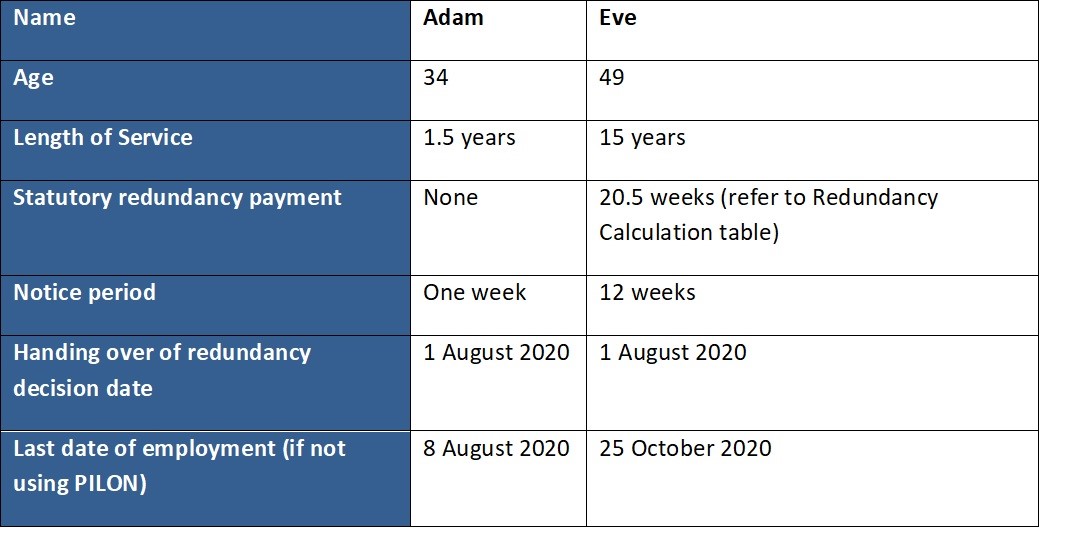Investigating the Interaction Between Firm Redundancy and Business Adaptability for Future Growth
In the vibrant landscape of today's business globe, the elaborate partnership in between company redundancy and organizational versatility arises as an essential element for continual development and success. Firms frequently deal with the obstacle of striking a fragile equilibrium between maintaining a level of redundancy to alleviate risks and cultivating adaptability to react quickly to the ever-evolving market needs.
Relevance of Firm Redundancy
Company redundancy is a vital component that enhances organizational resilience and mitigates operational dangers. By integrating redundancy procedures within the business structure, business can better endure unpredicted disturbances and fluctuations in the company environment. Redundancy serves as a strategic buffer, permitting firms to adjust and react effectively to unanticipated obstacles without endangering necessary procedures.
One secret aspect of the significance of company redundancy is its role in ensuring connection throughout times of dilemma. When confronted with abrupt adjustments or emergency situations, redundant systems, resources, or personnel can tip in to keep essential features and prevent widespread interruptions. This continuity not just safeguards the business's credibility and customer trust fund however also minimizes economic losses and functional downtime.

Strategies for Organizational Versatility

Another critical method is buying technology and infrastructure that can support versatility and scalability. Applying electronic tools, automation, and data analytics can improve operations, boost efficiency, and offer useful understandings for educated decision-making. Moreover, creating adaptable organizational structures that enable quick changes to market characteristics and customer needs is important for staying competitive in a rapidly developing environment. By proactively identifying potential disruptions and possibilities, companies can proactively adjust and prosper in an ever-changing service landscape.
Harmonizing Redundancy and Adaptability
Accomplishing an unified balance in between operational redundancy and organizational flexibility is critical in browsing the intricacies of a dynamic organization atmosphere. Striking the appropriate balance in between redundancy and flexibility is a delicate process that calls for a deep understanding of the organization's objectives, sector characteristics, and risk tolerance.
To achieve this balance, business require to conduct regular evaluations of their operations to determine locations where redundancy is needed for threat reduction and where flexibility can drive innovation and growth. Implementing flexible frameworks, cultivating a society of continual understanding and renovation, and urging open interaction throughout all degrees of the organization are essential techniques to balance redundancy and flexibility properly. By straightening these 2 essential components, business can position themselves for sustainable growth and success in an ever-changing organization landscape.
Instance Researches on Adjustment Success
In checking out instances of successful organizational adjustment, it becomes apparent that the interplay in between operational redundancy and versatility is a specifying variable in shaping resilient companies. A DVD rental solution, Netflix showed exceptional flexibility by transitioning right into a streaming system when digitalization disrupted the industry. These case studies highlight the relevance of functional redundancy combined with business versatility in fostering long-term growth and competitiveness.
Building Resilience for Future Growth
Building resilience for future development calls for a strategic placement Get More Info of functional procedures with market dynamics and emerging trends. Firms have to adjust to transforming settings by promoting a culture of versatility, development, and continuous improvement. Resilience involves not only bouncing back from setbacks yet additionally proactively preparing for future obstacles. One crucial aspect of structure resilience is buying durable threat monitoring strategies to alleviate prospective disturbances. This includes circumstance planning, diversifying supply chains, and creating backup strategies for various backups (who pays redundancy money).
In addition, promoting solid partnerships with stakeholders, such as customers, employees, vendors, and the area, is crucial for weathering uncertainties and keeping trust and assistance during turbulent times. Reliable communication and transparency play a vital duty in building durability, as they help assist in and align expectations partnership in browsing unpredictabilities.
Furthermore, companies need to prioritize discovering and advancement efforts to upskill staff members and equip them with the needed devices to adapt to changing conditions. By buying their workforce, business can enhance their adaptability and agility, eventually reinforcing their durability for sustainable future development.
Conclusion

In the dynamic landscape of today's company world, the elaborate relationship between firm redundancy and business adaptability arises as an essential element for sustained growth and success. Business often face the challenge of striking a fragile balance between preserving a level of redundancy to alleviate threats and promoting adaptability to respond promptly to the ever-evolving market needs.To attain this balance, business need to conduct regular analyses of their operations to identify areas where redundancy is needed for risk reduction and where versatility can drive technology and growth.In verdict, the interplay my explanation in between firm redundancy and business versatility is vital for future growth. Building resilience via a combination of redundancy and versatility will certainly make certain that firms are prepared for the difficulties of the future.